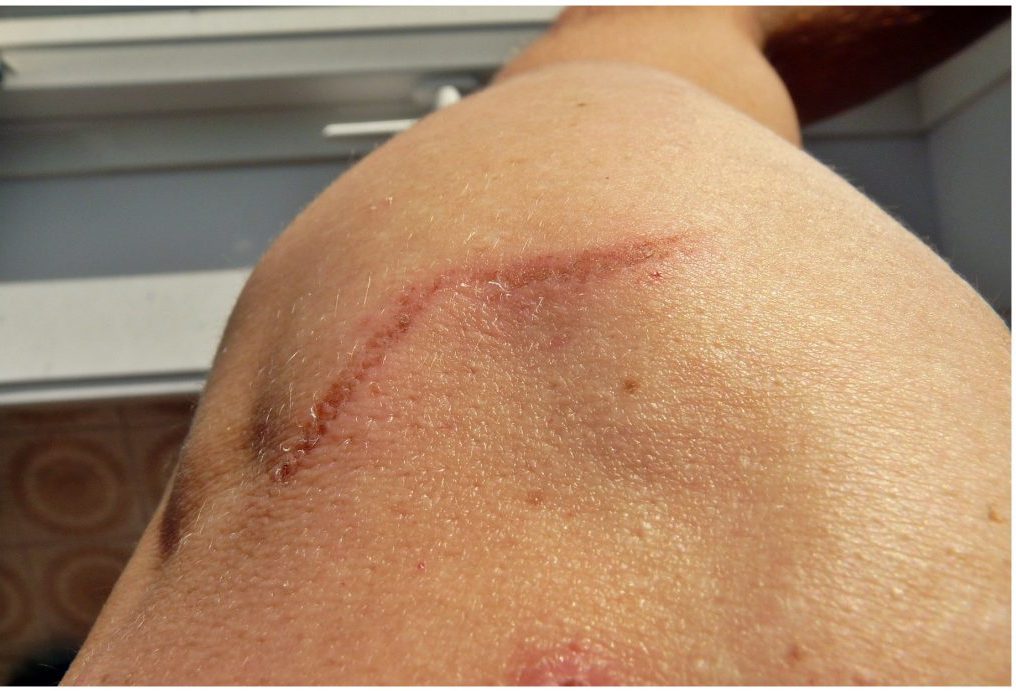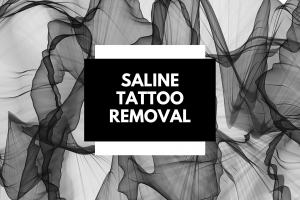
What is tattoo removal?
The general notion around tattoos is that they are a permanent body art – but tattoo removal is possible. Tattoo removal is a procedure that helps one to get rid of an unwanted tattoo or make space for an alternative one. Common removal techniques include laser surgery, surgical excision, and dermabrasion. Since the tattoo ink particles are located in the dermis layer of the skin, the removal procedure becomes more complicated and somewhat expensive.
Does Tattoo Removal Leave Scars?
Yes, tattoo removal may leave scars. But the risk of scarring also depends on the method of tattoo removal chosen.
Tattoo Removal Methods and the Risk of Scarring Associated with Each:
1. Surgical Excision Tattoo Removal
A tattoo can be removed by surgical excision removal method. This procedure involves cutting off the tattooed skin. After removing the tattooed area, the skin surrounding that region is pulled together and closed. This technique, however, works better for small tattoos than big ones.
Surgical Excision leaves a surgical scar.
2. Dermabrasion Tattoo Removal
Dermabrasion is also a surgical tattoo removal method. This technique involves the use of a medical grinding tool that is used to remove the outer layers of the skin in considerable portions. This process is continued till the inked skin layer is removed.
Given the high pain factor, this procedure is performed under local, regional or even a general anesthesia. The procedure leaves behind an open wound and involves longer periods of regular cleaning, antibiotic treatment and healing time.
Dermabrasion can cause permanent scarring.
3. Laser Tattoo Removal
Laser tattoo removal method is the most popular tattoo removal method. This technique might be painful, but is considered bearable and is, in fact, the safest of all.
A tattoo design actually consists of thousands of ink particles suspended in the skin. The human immune system is naturally designed to remove foreign particles from the skin. However, most of the tattoo ink particles are too big for the system to remove, resulting in the permanency of the tattoo. The laser breaks down these big ink particles to help the body remove them from the skin. It targets the ink particles with highly concentrated light waves that heat them up, fragmenting them into smaller particles. These particles are then carried out by the lymphatic system, and the tattoo begins to fade. A tattoo will need multiple laser sessions to disappear completely.
It’s uncommon for a person to get a scar after laser tattoo removal if proper protocols and after-care instructions are followed. Many people also do not recognize that the scar they see may be of the leftover ink (which will disappear with regular laser sessions.)
Tattoo Removal Scar

Following incorrect protocols and after-care routines during laser removal can cause scars. What to be cautious about?
Incorrect Protocol:
Usage of excessive fluence while treating a tattoo might cause unwanted side effects, such as immediate pin point bleeding and scarring. The laser technician must have the necessary training and skills to perform the procedure expertly.
Inadequate Aftercare
Sometimes, even if the tattoo removal treatment was performed with proper care, the individual’s neglect to perform after-care instructions – increases the risk of scarring and blisters.
Other Factors
People with a history of keloids may have a higher risk or may be predisposed to scarring during the procedure. It is thus important to discuss medical history with the tattoo removal technician/dermatologist.
- Another thing to look out for – pre-existent scars. When a laser treats the skin, the ink will be eliminated, but any of the pre-existing scarring will likely still remain. In fact, the laser can cause it to become even more evident.
Other Side Effects of Tattoo Removal
Although with proper and professional tattoo removal techniques and right kind of after care, scarring can be an unusual occurrence, side effects can be an expected part of the tattoo removal process. Some side effects, in fact, can be an important part of the immune system’s response to the laser treatment that helps in eliminating ink from the skin.
Most common side effects are –
- Swelling
- Redness
- Tenderness
- Scabs
- Hyperpigmentation
- Hypopigmentation
- Bruising
- Blistering
These side effects are mostly temporary, when the protocols are followed properly. Redness, tenderness, swelling typically subsides within a day or two. Blisters usually appear 24 hours after the treatment was performed. Sometimes the blisters might look alarming, but that too is considered to be normal. Scabs, bruises, and blisters might take longer periods to heal compared to swelling or redness.
Hyper/hypopigmentation occurs when the body produces irregular amounts of melanin after the laser removal treatment. Hyperpigmentation happens when the skin over produces melanin after the removal process, and the treated skin looks darker than the natural skin. In case of hypopigmentation, melanin production is less and thus the treated skin looks bleached. Both, hypopigmentation and hyperpigmentation are usually temporary and heal naturally with time. People with darker skin tone face this issue more than people with lighter skin tone.
Consultation Before Tattoo Removal
Tattoo removal can sometimes results in skin infection, skin discoloration, and scars. It is always good practice to first consult the professional and discuss medical history, before and after care instructions, and any other doubts and confusions before proceeding with the tattoo removal process.
Most people are concerned about permanent issues and side effects rather than temporary aftermath. Permanent side effects include scarring and pigmentation changes. But, these issues can be avoided, if proper steps are taken during the laser tattoo removal sessions and after care routine. Surgical excision and dermabrasion will leave behind some scarring.




